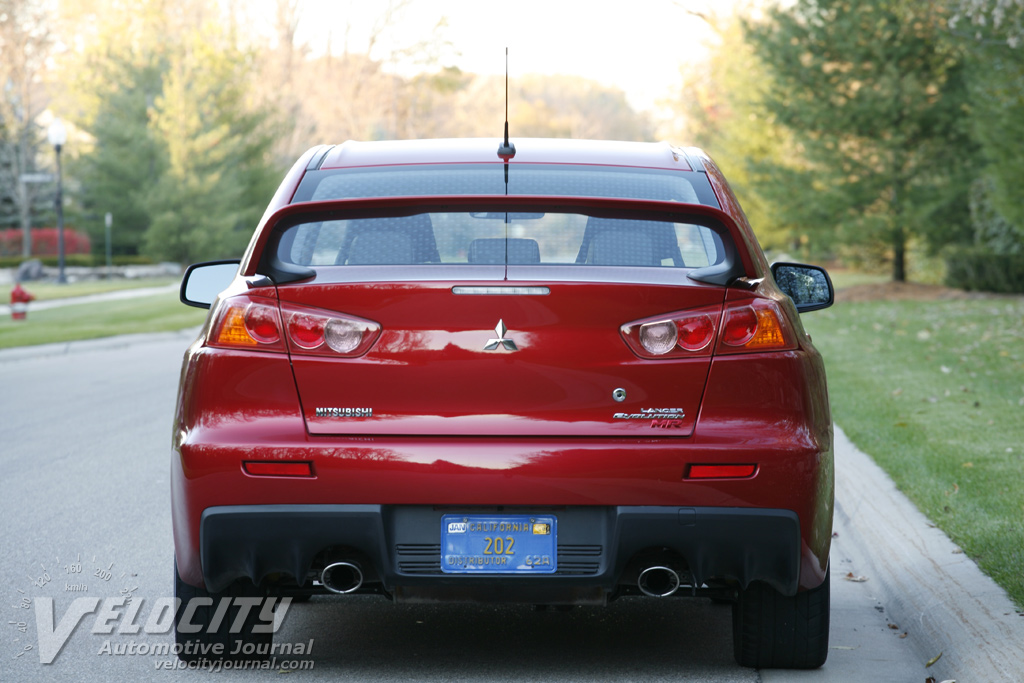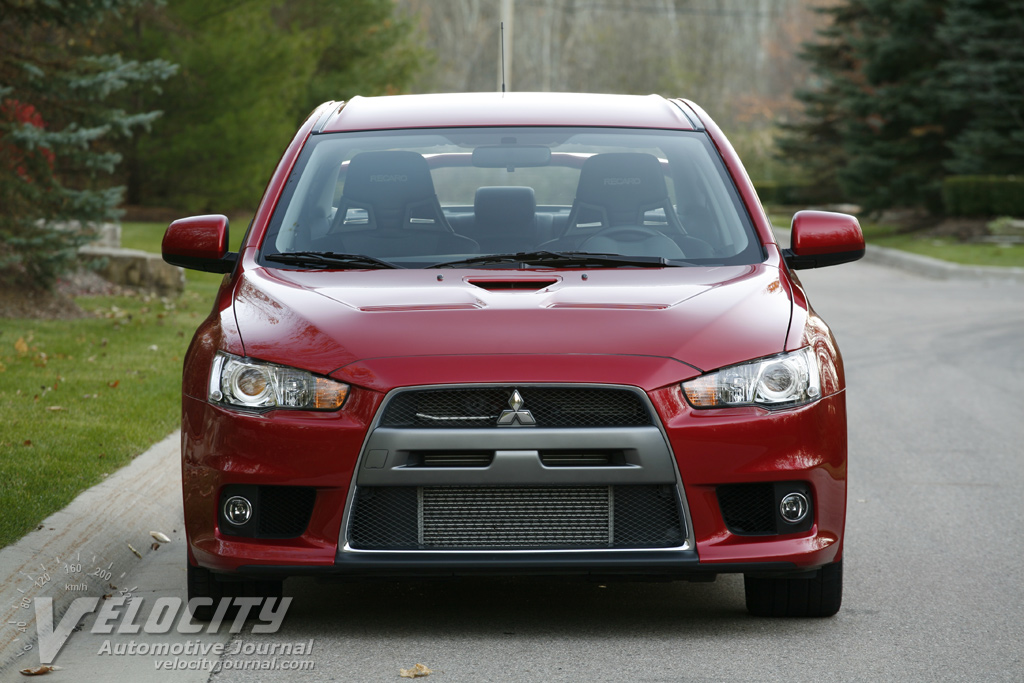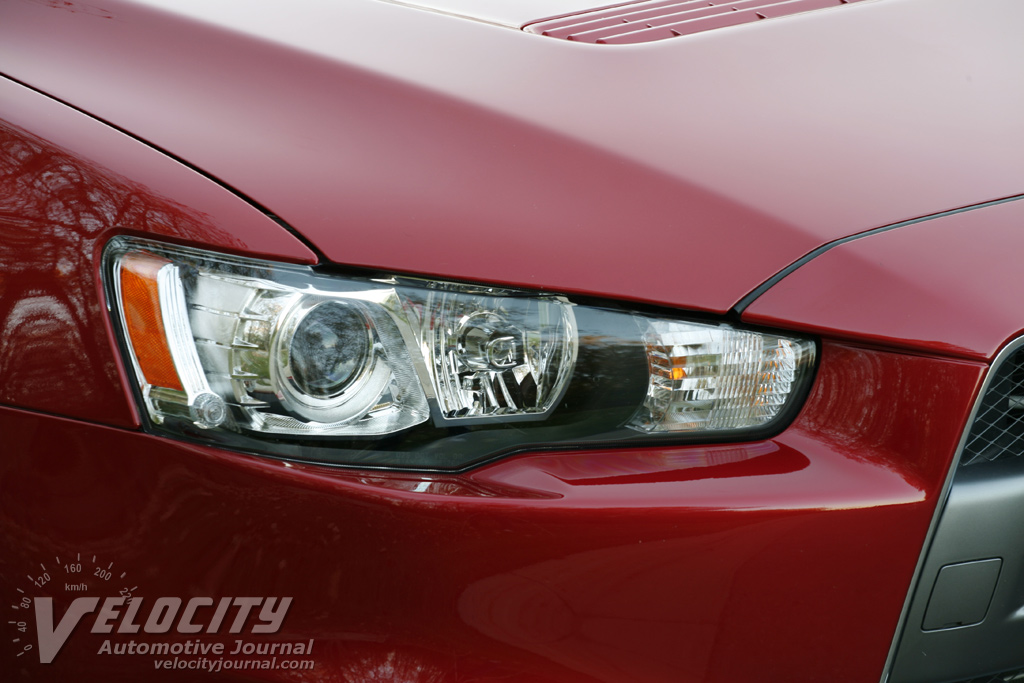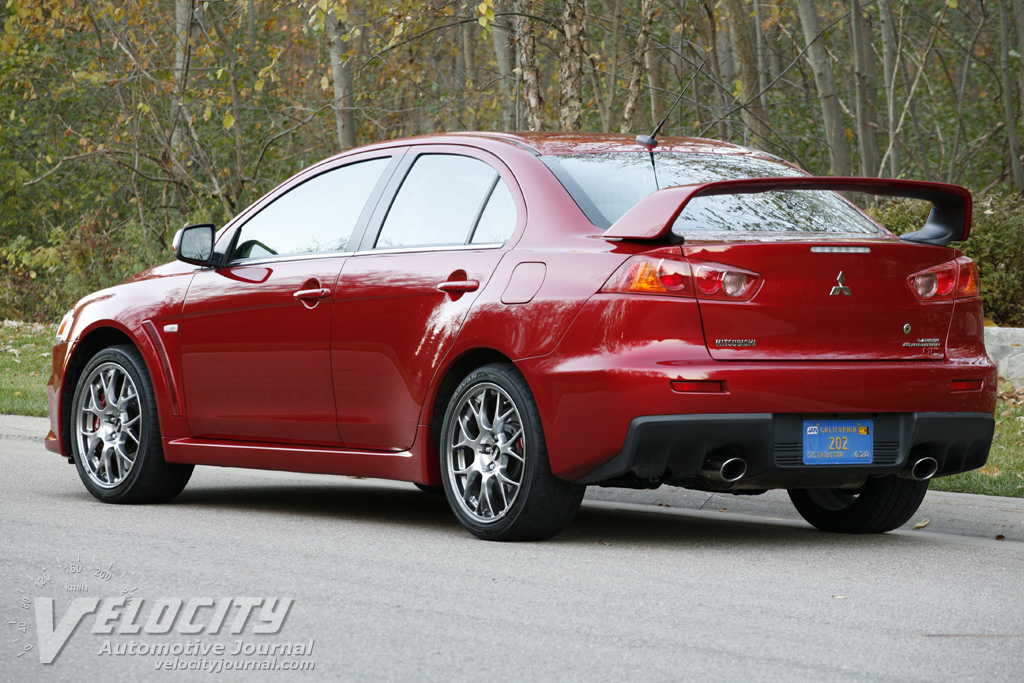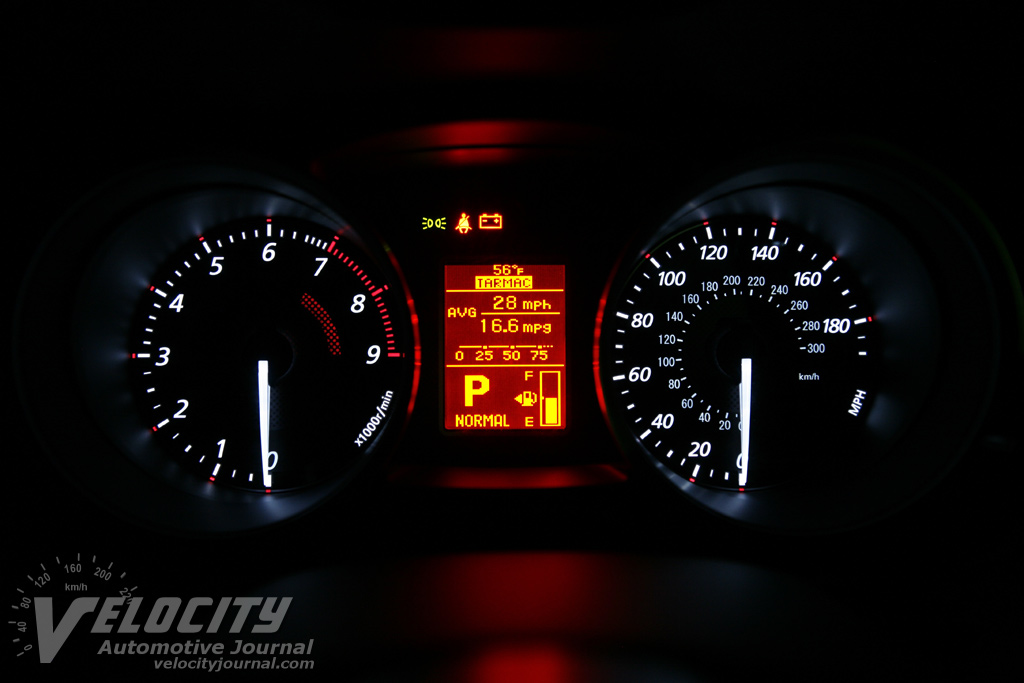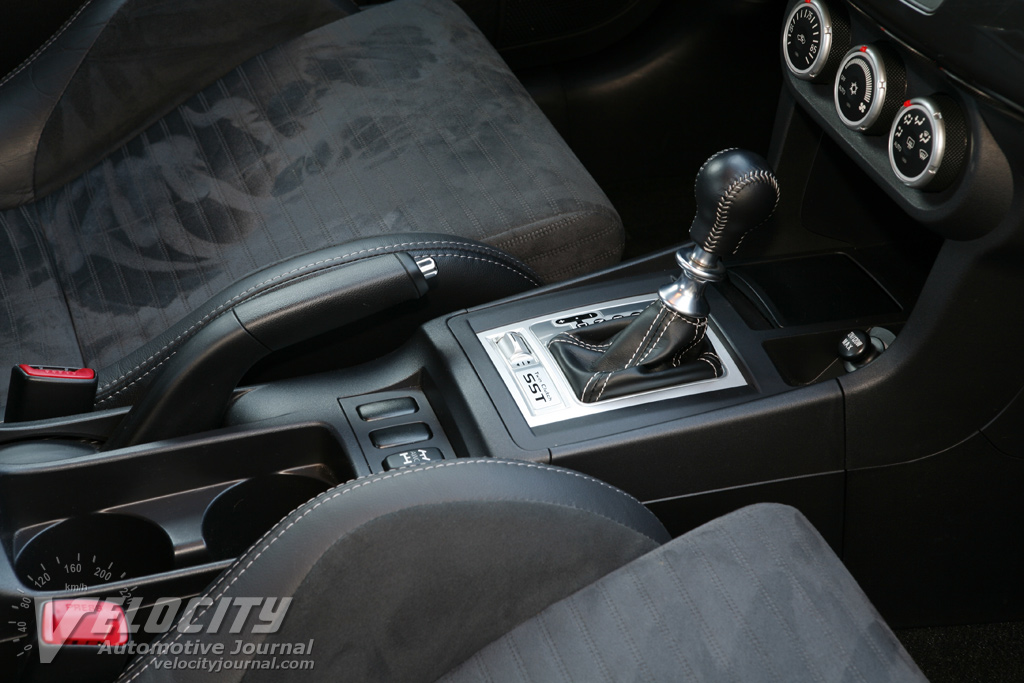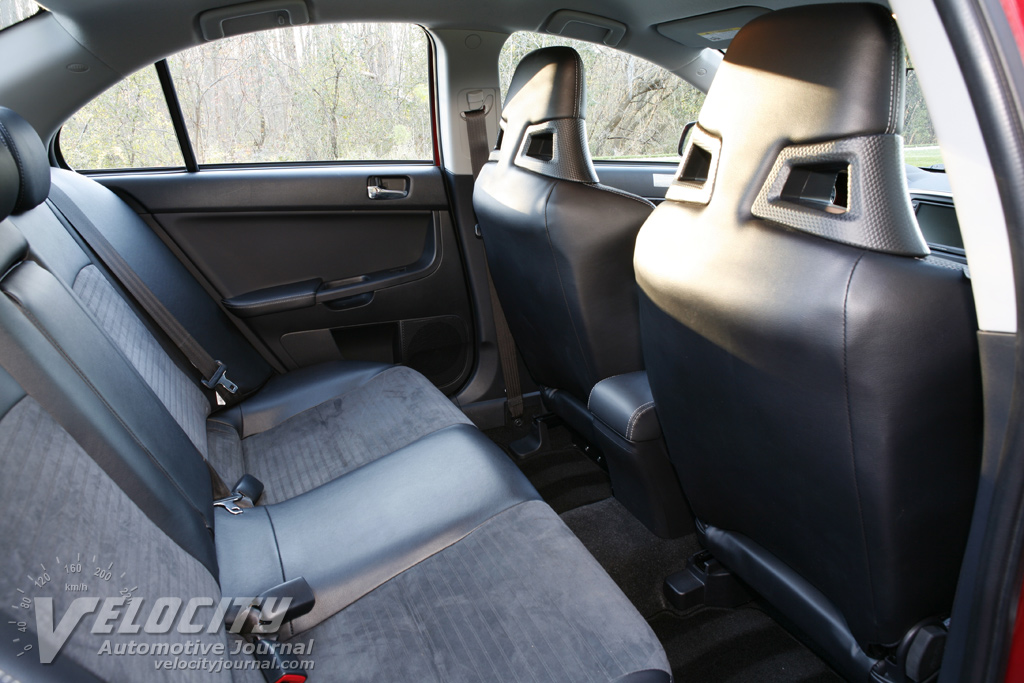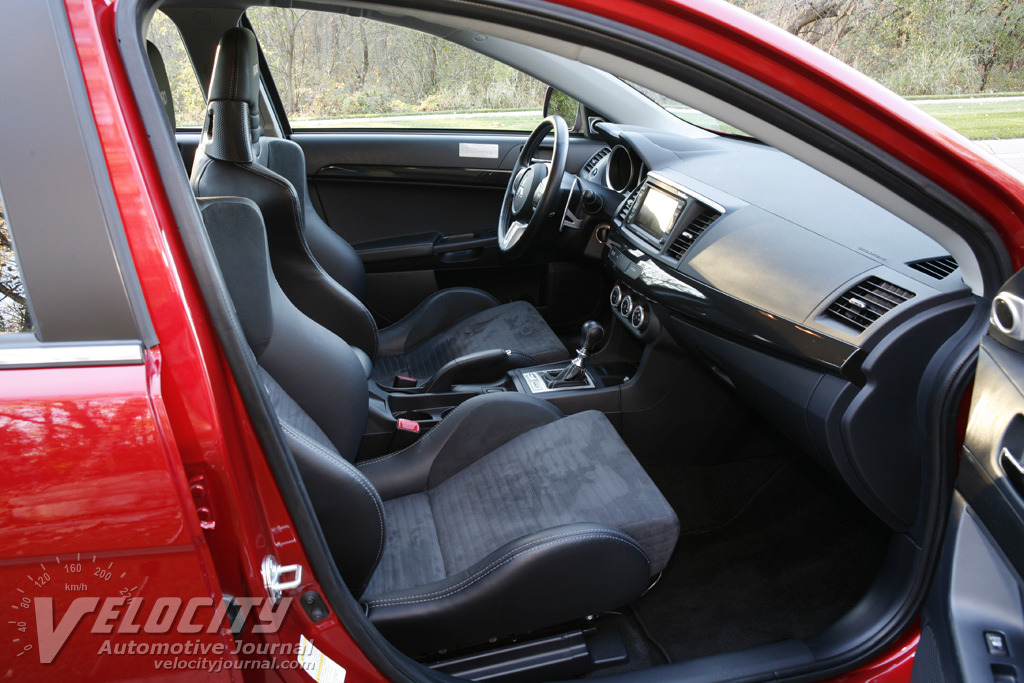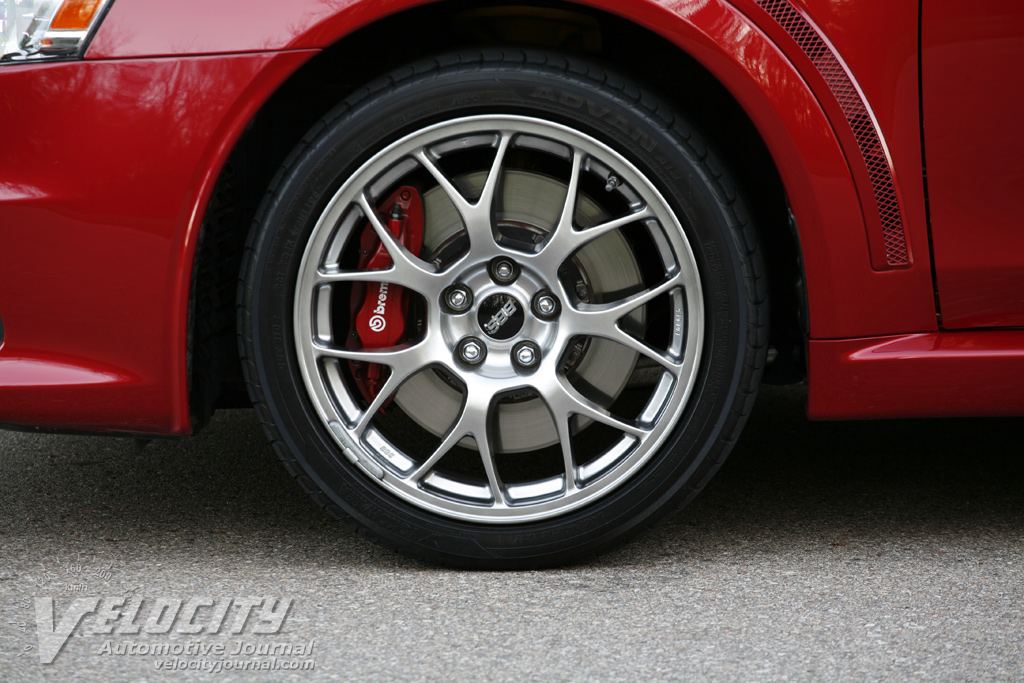2008 Mitsubishi Lancer Evolution MR
11/07/2008
Shahed Hussain
The Mitsubishi Lancer Evolution (affectionately abbreviated as "Evo") offers a rare combination of a motorsports pedigree at an attainable price. Successive generations of Evo models have found success in rally championships worldwide; the formula has always included all-wheel-drive and a turbocharged small displacement four-cylinder engine. Although available in Japan, Europe, and Australia for years, in 2003 Mitsubishi finally imported the Lancer Evolution VIII to rave reviews from enthusiasts.
Mitsubishi offers the new Lancer Evolution in two variants: GSR and MR. Both models have all-wheel-drive and an identical high-performance 2.0-liter, turbocharged four-cylinder under the hood, but different transmissions. Priced at $33,665, the base 5-speed manual GSR contains a comprehensive list of standard features including Recaro sport seats, 18-inch alloy wheels, power windows/locks, remote keyless entry, cruise control, automatic climate control, and a 140-watt audio system. The premium Evolution MR benefits from upgraded Eibach springs, Bilstein shocks, BBS wheels, and HID lights, in addition to a standard 6-speed Twin-Clutch Sportronic Shift Transmission (TC-SST in Mitsubishi parlance). A GSR option package adds HID lights and an upgraded 650-watt, 9-speaker Rockford-Fosgate sound system for $2,000. The Technology package for the MR includes a navigation system and the upgraded audio system for $2,550. Our test model was an Evolution MR ($38,290) with the technology package ($2,550), optional wheel locks ($40) and aluminum sport accessories ($499) priced at $42,054.
In the specialized niche occupied by the Lancer Evolution, only the Subaru Impreza WRX STI is a direct competitor. The STI ($35,640) switched to a 5-door body style with its redesign in 2008, but the upgraded 2009 WRX sedan model promises to be a closer match. Volkswagen offers the all-wheel-drive R32 Golf in this price range, but only as a 3-door hatchback. Other sport compacts like the Volkswagen's GTI, Honda Civic Si, Mini Cooper S, Mazda MAZDASPEED3 and Dodge Caliber SRT4 are FWD-only and typically offer significantly less power, but with more affordable sticker prices. For similar money, the AWD Infiniti G35x is an intriguing alternative with its 306-bhp V-6, but the comparatively luxurious Infiniti fails to deliver the Lancer's wild rally-car experience.
In prior Lancer models, the inexpensive interior materials seemed subpar relative to other compact sedans. The revised interior is much improved. Only a few bits of trim such as the rigid plastic door panels are deficient. Evo models do include superb Recaro front seats, upholstered in simulated suede and leather. Despite adjustability limited to reach and rake, these seats are firm and supportive and will be comfortable for all but the largest backsides. The Lancer's exceptional headroom and legroom for front and rear passengers is most welcome in such a sporty sedan. In contrast to the spacious interior, the trunk-mounted battery, subwoofer, and windshield fluid reservoir leave little room for suitcases.
Unlike the dim red gauges in previous models, the new Evo gets crisp electroluminescent replacements that are significantly more legible at night. Some owners will miss the turbo boost gauge available in the previous Evo MR. The thick leather-wrapped steering wheel offers just the right grip, while paddles on the steering column allow convenient fingertip gearshifts. Buttons for the audio system, Bluetooth phone, and cruise control are conveniently arrayed on the steering wheel spokes. A 190-MPH speedometer and 9,000 RPM tachometer flank the center information display that shows fuel consumption, fuel level, AWD status, and transmission mode.
The optional Technology package integrates a large touch screen for the navigation and audio systems, as well as configuration of various electronic subsystems. The LCD folds out for access to the CD/DVD player slot. Mitsubishi's navigation system has some intriguing but largely unnecessary features like an appointment calendar, altimeter, and GPS data; nonetheless, the enhanced Rockford Fosgate audio system makes the tech package a compelling upgrade. Below the multi-function touch screen are the airbag status indicators and hazard light switch. At the bottom of the center stack are knobs for the climate control system. The center console contains a large storage bin, audio/video inputs, AWD controls, and a hidden compartment below the center armrest.
An Evo is defined by its powerplant, an all-aluminum 2.0L inline-4 that churns out 291-bhp @ 6,500 RPM and 300 lb.-ft. @ 4,400 RPM; the new 4B11 T/C engine incorporates Mitsubishi's MIVEC variable valve timing system. As with the much-loved 4G63, maximum revs remain at 7,000 RPM, and the 4B11 is eager to run right to redline. Power builds quickly above 3,000 RPM, accompanied by an intoxicating muffled turbo whine. The 4B11 T/C seems to be less peaky than its predecessor, resulting in faster low-RPM throttle response.
As with most highly boosted turbocharged powerplants, fuel consumption is dependent on driving style. The EPA rates the Evolution MR model at 17/22 MPG (city/hwy.). We averaged over 16 MPG in mostly urban roads, but relaxed highway cruising yielded up to 23 MPG. However, if you drive the Evo as Mitsubishi intended, expect mileage numbers in the mid-teens.
Mitsubishi equips the base Lancer Evo GSR with a 5-speed manual, but the MR gets a new 6-speed TC-SST that dispenses with the clutch pedal. Traditionalists may grumble, but the TC-SST combines the rapid shifts of a standard manual gearbox with the convenience of a conventional automatic. The TC-SST has Normal and Sport settings, set via a rocker switch next to the shift lever; a special Race mode is available for track duty. Shift quality is generally outstanding, aside from a languid first gear launch and delayed reverse engagement. However, second through sixth are rifle-shot quick, as the TC-SST slams through each gear. When set to the optional Sport mode, the shifts are even faster and harsh; we felt an occasional thump when the transmission matches revs to downshift when decelerating. In Normal mode, the TC-SST requires nearly full throttle to downshift, while the Sport setting tends to favor lower gears, for faster acceleration. For most street driving, the Normal mode is preferable, but the Sport setting is perfect for impromptu drag racing.
Like its predecessors, the Evo MR inherits nearly telepathic steering. Aim the Lancer anywhere, and it follows the driver's input unerringly. Mitsubishi did reduce the Evo's tendency to tramline on uneven pavement, which enhances stability. There is a hint of oversteer powering through corners, but the sophisticated AWD system maintains full control. The nearly neutral handling is even more impressive considering that the Evo MR has a nose-heavy 57.4/42.6 front/rear weight distribution.
Mitsubishi spared no expense to develop the Evo's suspension. In front are inverted MacPherson struts, forged aluminum control arms, and a 25 mm diameter anti-roll bar; at the rear is a multi-link layout with forged control arms and a 23 mm diameter anti-roll bar. Dedicated Bilstein dampers and Eibach springs are at each corner. Massive 4-piston Brembo calipers cover 13.8" diameter front rotors; even the rear brakes include 2-piston calipers and 13.0" diameter rotors. A firm pedal and exceptional stopping power were expected, and the Evo does not disappoint. Beefy 18" x 8.5" BBS forged alloy wheels are shod with Yokohama P245/450R18 ADVAN A13 tires. The Yokohamas have tremendous dry weather grip that far exceeds what can be exploited safely on public roads.
As befits its rally racer heritage, the Evo's ride quality verges on harsh, especially over pockmarked pavement, where it skitters over the road, yet somehow remains composed and controllable. However, owners of previous generation Lancers will notice that the latest Evolution MR has just a bit more compliance the Evo IX; roll stiffness seems somewhat reduced, which improves ride quality. Nonetheless, a more comfort-oriented suspension setting would be better suited for the torn-up streets and highways in the northern US, but owners fortunate enough to live in regions with well-maintained roads will probably tolerate the Evo's ride in exchange for its superb handling.
Driving a Lancer Evo is outrageous fun; few cars can match its all-around performance, at anywhere near its price. It's difficult to imagine any serious auto enthusiast not enjoying his or her time behind the wheel of an Evo, which combines of neck-snapping acceleration, unflappable handling, and 4-door practicality. For the tenth iteration of the series, Mitsubishi has delivered a significantly more refined and polished Evo that remains true to its heritage of providing the most thrills of any compact sedan.




